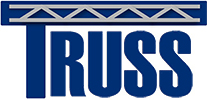www.microlise.com Microlise Ltd.
Microlise Ltd.
Farrington Way, Eastwood, Nottingham, NG16 3AG,
United Kingdomwww.microlise.com
 Microlise Ltd.
Microlise Ltd.Farrington Way, Eastwood, Nottingham, NG16 3AG,
United Kingdom
Provider of Transport Management solutions specialising in vehicle tracking & telematics, transport management & planning and proof of delivery systems. Headquarters in Nottingham UK, and they also have offices in the USA.
Microlise, established in 1982, employ around 230 staff with skills in software and hardware development, logistics consultancy and business analysis, project management, implementation, training and support. They have developed a core Transport Management System product set, which they then configure and customise to deliver a perfect fit transport management solution. Their system is deployed across hundreds of fleets comprising more than 100,000 vehicles across 120 countries.
Key drivers for implementing a Microlise system are to increase utilisation and productivity, reduce fleet and operational costs, improve customer service, improve driver safety & fuel economy, and ultimately lower CO2 emissions.
- Dr Mohammad Mesgarpour
- Ian Dickinson
Knowledge Transfer Partnership project to design and develop Telematics based Prognostics Systems (Microlise, UNOTT); Technology Strategy Board grant to investigate improving the environmental efficiency using dual-fuel HGVs (Hamworthy, Microlise); Technology Strategy Board funding to develop mobile apps for integrated logistics management portal (Microlise); provision of sensor data to current PhD study concerning identification of potential accident risk on the highway network (UNOTT, Microlise).
Supporting MSc projects at the UNOTT and University of Southampton.
- Mesgarpour, M., Landa-Silva, D., Dickinson, I. (2013) Overview of Telematics-Based Prognostics and Health Management Systems for Commercial Vehicles. Activities of Transport Telematics, J. Mikulski (ed.), Communications in Computer and Information Science, Vol. 395, pp. 123-130, Springer.



